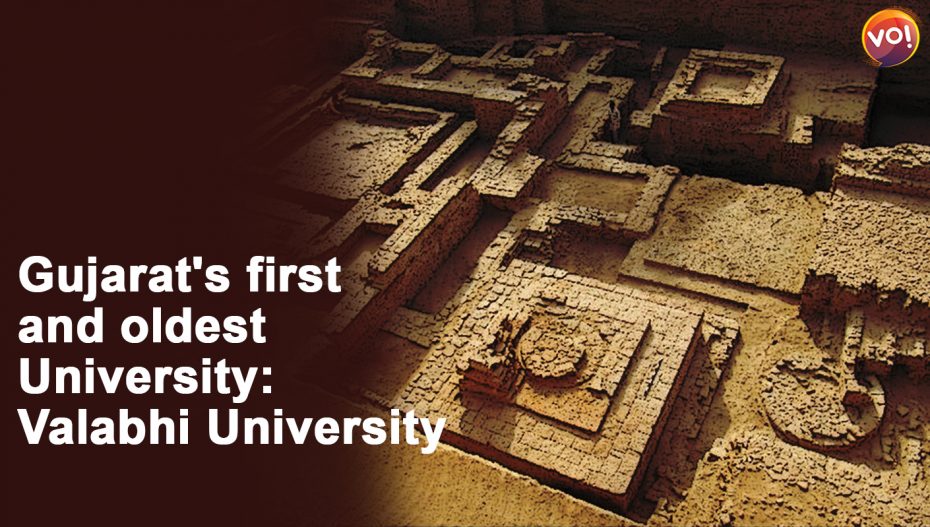Nalanda and Taxila are synonymous with ancient universities in the Indian subcontinent but Gujarat, too, had its seat of learning of that era, the Valabhi Vidyapith located near Bhavnagar.
The fame of the Valabhi Vidyapith, believed to have been functional from AD 600 to AD 1200, was not limited to the shores of Gujarat but travelled far and wide.
Valabhi was the capital city during the Maitraka dynasty in the Saurashtra region of Gujarat. The Valabhi Vidyapith a school of Hinayana Buddhism and its academic excellence was on a par with the world-famous Nalanda University.
However, an interesting aspect about the Valabhi Vidyapith was that despite being a centre of the Hinayana school of Buddhism, it imparted knowledge about the Vedic practices and Brahmanism. It is said that young Brahmin students from the banks of the Ganga in North India would travel to Valabhi to study Vedic practices and rituals.
The Valabhi Vidyapith was also famous for its teachings in other fields such as Political Science, Farming & Trade, Public Administration, Religion & Law, Architectural Sciences, Metaphysics, Medicine, Logic & Reasoning, Economics and Accounting, and so on.
Like modern-day varsities, Valabhi Vidyapith, too, had an admission test of sorts; failing meant the student had to return from the gates and was not even allowed to enter the Vidyapith. And just like campus placements students of Valabhi Vidyapith after completing their learning were absorbed within the administration of all those kings and kingdoms who would support the Vidyapith with help in various forms.
The Vidyapith, during the mid 7th century, welcomed 6,000 students for learning with more than 100 viharas built for their accommodation. The vihara was a miniature form of the university, imparting knowledge to its students but under the aegis and administration of the university — just like the modern-day college and university setup.
The masters or pandits treated students like their children and it is said they would not move to the next lesson till all the students memorised a lesson. Such was the attention and care given to the students.
The duration of most courses or subjects lasted for around 10 years and one pandit or teacher was allocated for every five students. Another distinguishing feature of this university was the philosophy of treating all as equals; the son of a king and that of a poor man studied together, in the same class, sitting together without offering any kind of fees.
Every student was supposed to wear a uniform the moment they entered the Vidyapith, irrespective of their social status. The foundation level was known as Nissaya, which was for 10 years, and each student was allowed to choose a mendicant as their guide. A student would then be promoted to the Sthavira level where he would pick up a subject to master it further and be called Upadhyay. After that they would be associated with the university, imparting knowledge to the incoming new students.
Kathasaritsagar, the composition by the renowned poet Somdev, describes the name and fame of Valabhi Vidyapith. It goes on to say that Brahmins often chose the Valabhi Vidyapith over Nalanda or Banaras when it was time for their children to imbibe learning and knowledge.
Well, known pandits like Gunmatti and Stirmatti taught at the Valabhi Vidyapith. The guru of both these pandits, Vasubandhu, was from Nalanda University. Often it was said that students from Valabhi Vidyapith were sent to take part in important debates and discussions about ancient Vedas and scriptures.
Valabhi was an important port that flourished in trade and commerce and kings of the Maitraka dynasty and the local merchants and traders often donated hefty amounts to Vidyapith for its libraries and other resources. But there was one more reason for this philanthropy. Buddhism received royal patronage under Emperor Ashok and despite Brahmins trying to stem the flow, Buddhism spread far and wide.
It is also believed that most subjects of the Maitraka dynasty followed Buddhism. Those who were Brahmin by birth also took to Buddhism and respected the Viharas, Chaitya, Math and Vidyapith and contributed generously to the university.
The year AD 775 saw the downfall of Valabhi Vidyapith after Arabs attacked the Maitraka Dynasty. Despite the plunder, Valabhi Vidyapith continued till the 12th century, gradually losing its sheen and relevance as the sands of time ran out.
Cut to the year 2017, and the 2nd International Buddhist Conference organised at Vadodara resonated with appeals to revive the Valabhi Vidyapith. A proposal, under the umbrella of an organisation called Sanghkaya, was sent to the central government, which the Union ministry of culture has okayed.
Only time will say if the future of Valabhi Vidyapith will match its grand history.













